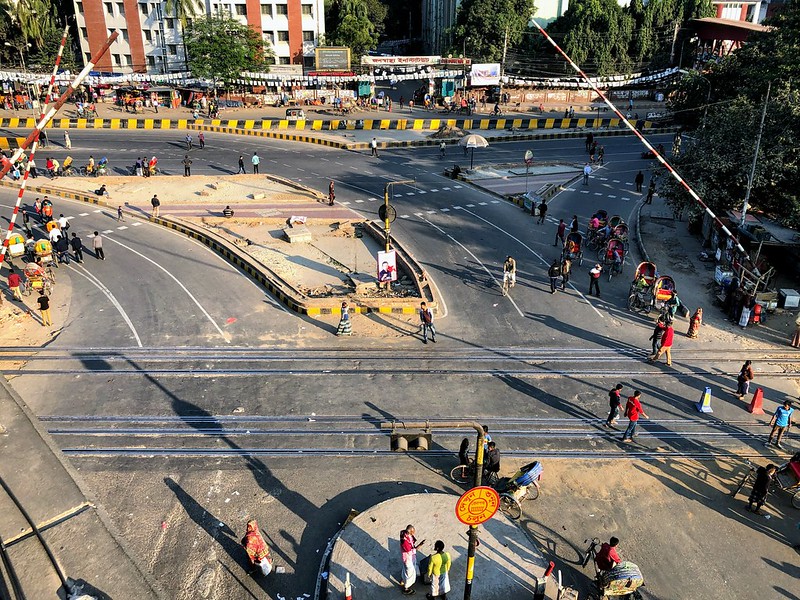The city belongs to the citizens. People make the city, they make it what it is, and the city itself dictates the lives of its citizens. The way the city is perceived by its citizens becomes embedded in the culture. According to Bangladeshi academic, writer and columnist Syed Manzoorul Islam “A city lends itself to multiple interpretations and is a selection of makeshift arrangements.” Citing the famed Italian writer Italo Calvino’s Invisible Cities, Manzoorul Islam argues that the image of the city is established by the way the citizens narrate their city through various artistic and literary forms. However, there are many ways in which the city is unable to lend itself to the imagination of its citizens.

Walter Benjamin, the German philosopher and writer, became deeply interested in a phenomenon which the French had been advancing for many years, the flâneur. Invoking the works of French poet Charles Baudelaire, Benjamin for the first time made ‘flâneur’ or ‘boulevardier’ a subject of scholarly interest. To Benjamin the flâneur “was a figure of the modern artist-poet, a figure keenly aware of the bustle of modern life, an amateur detective and investigator of the city, but also a sign of the alienation of the city and of capitalism,” which ideally would be the way one would experience the city. However, it could be argued that this romanticised idea of a leisurely experience is a distant figure from 19th century Paris. The reality for a 21st century Dhaka commoner would be a far cry from Baudelaire’s vision. The modern metropolis is certainly not a place where everyone experiences leisure, rather an admixture of diversity and excitement. Who is to say that this in itself cannot be a complete experience? However, there might be room for revision in the idea of the boulevardier as far as present day Dhaka is concerned where walking can certainly be a traveling necessity.

In The Practice of Everyday Life, French historian and cultural critic Michel De Certeau explains the disconnection between what is the actual experience of the pedestrian ‘down below’ and the way maps and plans are made by the officials ‘up above’. Both Baudelaire and De Certeau try to drive home the point that the city is ambiguous, and it is important to both see and read it, and there is perhaps no better way to do this than by walking through it. De Certeau was perhaps more successful in the regard that he addressed the everyday pedestrian who wasn’t there for leisure but rather for a purpose. This is more relevant to the vast majority of the people in the cities who rarely get the opportunity to take leisurely walks; they perceive the city mostly in oblique ways, that is, when they are doing something other than intentionally and directly trying to observe it.
Accessibility of the city to its citizens could be seen as the primary yardstick to measure the experience of living in a city. Modern French philosopher Michel Foucault described occasions of the city as carceral, such as the public spaces that are turned into gated grounds and surveillanced barricades that discourage gatherings and interactions. Echoes of Foucault’s dystopia can be heard loud and clear in Dhaka. There barely exists a space in Dhaka not walled, gated or surveillanced, and very few that purposefully encourage interaction and engagement of the public. According to French anthropologist Marc Augé, there exists in cities spaces that people spend much of their time in, but those that don’t belong to them. The streets, the terminals, the hospitals and hotel rooms are all ‘non-places’ according to Augé. Arguing that these spaces do not empower one’s identity, Augé notes that they do not allow for meaningful interactions with individuals of common social references. They are places where people remain anonymous, and where people don’t live in. A carceral space will always be a non-place, and a city riddled with non-places is one where no one can possibly belong to. Perhaps this is the reason why most people in Dhaka still provide the address of their village homes when they identify themselves. Not everyone perceives the city (much like anything else) the same way as another, but a city that cripples social interactions among its citizens isolates its citizens. The city ends up being venues for rat races where it is both the means and the end to desires that provide no real fulfillment.
The city however could become embedded in the identity and imagination of the citizens, fulfilling their social, spiritual and economic needs to provide a satisfying living for those who dwell within it. According to Brazilian politician and architect, and former mayor of Curitiba, Jaime Lerner, “The city is not a problem, it’s a solution. And more and more, I’m convinced that it’s not only a solution for a country, but it’s a solution for the problem of climate change.” So perhaps it’s time for the citizens to start taking back their cities.
Muntakim Haque wrote this based on the lectures by Kazi Khaleed Ashraf and Syed Manzoorul Islam, September 2017
Featured image: by Mohammad Tauheed CC BY-NC

